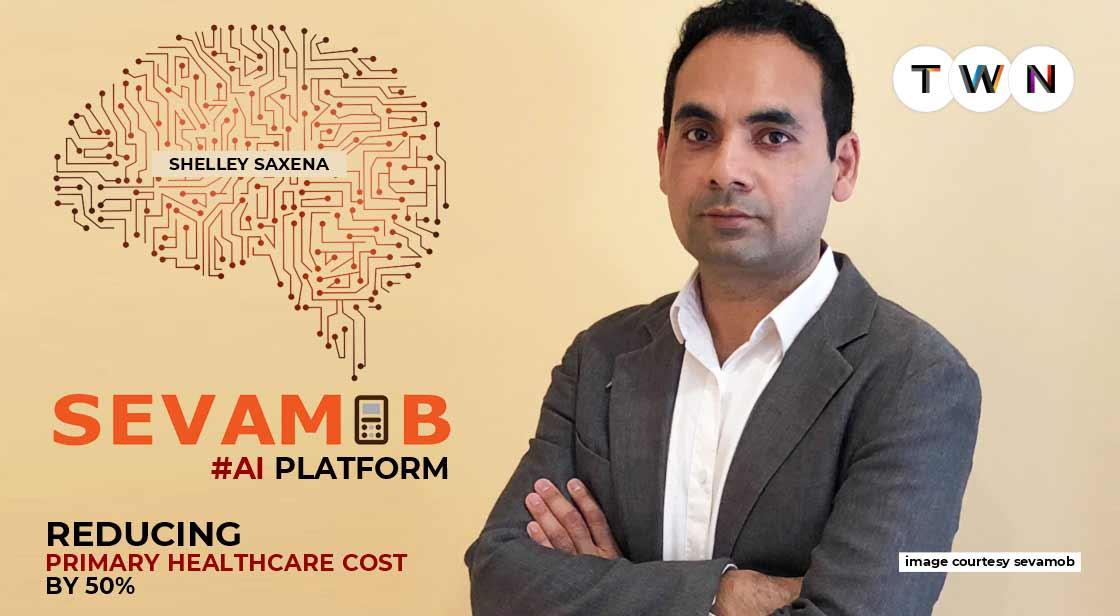
In comparison to many affluent countries, India's life expectancy is 14-18 years shorter. Poor health outcomes and reduced life expectancy are common in India due to a shortage of basic healthcare, particularly in rural villages and cities outside of large urban regions. Shelley Saxena stepped up to bridge the gap between the medical sector and rural or tier 3 cities to address this issue. All of this occurred as a result of a situation that altered everything. This article will discuss the beginnings of a revolutionary platform known as Sevamob.
Sevamob's Backstory
Shelley Saxena shares his incredible story about how Sevamob came to be. Let's learn a little more about him.
He was born in India's Lucknow and graduated from the Indian Institute of Technology, Roorkee, with honours. He worked in IBM product development for a range of products after graduating before receiving an MBA from Cornell. He worked in several product groups at IBM following his MBA, undertaking product management, channel, and go-to-market work. He co-founded a successful cloud-based mobile technology firm in 2010.
As a result of an incident with his mother, Sevamob was created five years ago. She was misdiagnosed with Hepatitis C, and as a result, she was on the verge of death. He understood that if it could happen in a Tier 2 city in India, it was considerably worse in Tier 3 and rural areas. As a result, he started a primary healthcare service in rural areas and swiftly switched to a more sustainable business-to-business model. Sevamob rapidly expanded to more than 15 Indian states and one US state, offering a variety of fast tests, specialised services, and telehealth. Tests were also carried out in southern Africa. About two years ago, we decided to move into artificial intelligence to cover some holes that could not be supplied by off-the-shelf technologies.
How did Sevamob come up with new ideas?
There were essentially two types of advances.
Product Development
This implies using technology to deliver more primary healthcare services at the point of care in low-resource areas while also lowering the costs of those facilities. The following are major product innovations:
Artificial intelligence-assisted triage and point-of-care testing for blood, vision, urine, sputum, and nutrition. In low-resource environments, health personnel only need a little training to utilise and work offline. This boosts nurse productivity and allows them to deliver services that would otherwise necessitate the use of a specialist.
In healthcare, a forum for video consultations and second opinions. This increases the availability of physicians in underprivileged areas.
Process Improvement
Their hybrid primary care concept is scalable, reproducible, requires less upfront money, and can cover a much larger geographic area. A medical team under this group approach may serve 3-4X the amount of patients as opposed to a fixed clinic model.
What Impact Did COVID Have on Sevamob and Its AI in Private Healthcare?
The corporation has benefited from the Covid-19 epidemic. Since April 2020, it has received 18+ additional Covid amenities agreements, including prevention actions, awareness, assessment, testing, treatment/referral, and tracking.
Sevamob immediately realised that in order to survive, they needed to pivot. To reduce risk and improve availability, it increased the use of telemedicine and introduced onsite Covid services. Sevamob cut its operating costs while also setting up a line of credit in case of an emergency. The corporation intends to grow its position in South Asia and reproduce it in Sub-Saharan Africa during the next five years. Sevamob is also working on gaining the required permits for its AI technology, which will allow it to be utilised in other places, including the United States.
Artificial Intelligence Implementing Company's Competitors in the Medical Field
Sevamob's key competitors, according to CEO Shelley Saxena, are:
• Sigtupl – AI tech providers
• Practo – Healthcare IT providers
• Clinics for the final mile
In comparison to these businesses, Sevamob has a significant competitive edge. By merging artificial intelligence with telemedicine and scalable last-mile service delivery, they were able to cut the cost of primary care by up to 50%. Their AI is rapid and point-of-care, and it may be used by a nursing assistant or technician in low-resource settings.
Sevamob has also submitted four patents related to artificial intelligence.
Sevamob AI in Healthcare: Examples
Sevamob is presently employing five AI models:
• Sputum AI - This technology analyses sputum samples and is commonly used for tuberculosis screening.
• Blood AI - It uses only a smartphone and a simple microscope to analyse blood samples. It's commonly used to check for several types of anaemia.
• Vision AI - Using a smartphone and a fundus camera, this AI technology checks for medical issues related to vision. Diabetic retinopathy and cataracts are treated with this medication.
• Urine AI - This AI technology examines urine samples and screens for pus cells, calcium oxalate crystals, and red blood cells (RBCs).
• Diet AI – This AI model can easily diagnose mineral and multivitamin deficiencies, as well as provide you with a comprehensive exercise, diet, and stress-reduction plan.
Tags:
shelley saxena, ai in healthcare, artificial intelligence in the medical field



Comments
Post a Comment